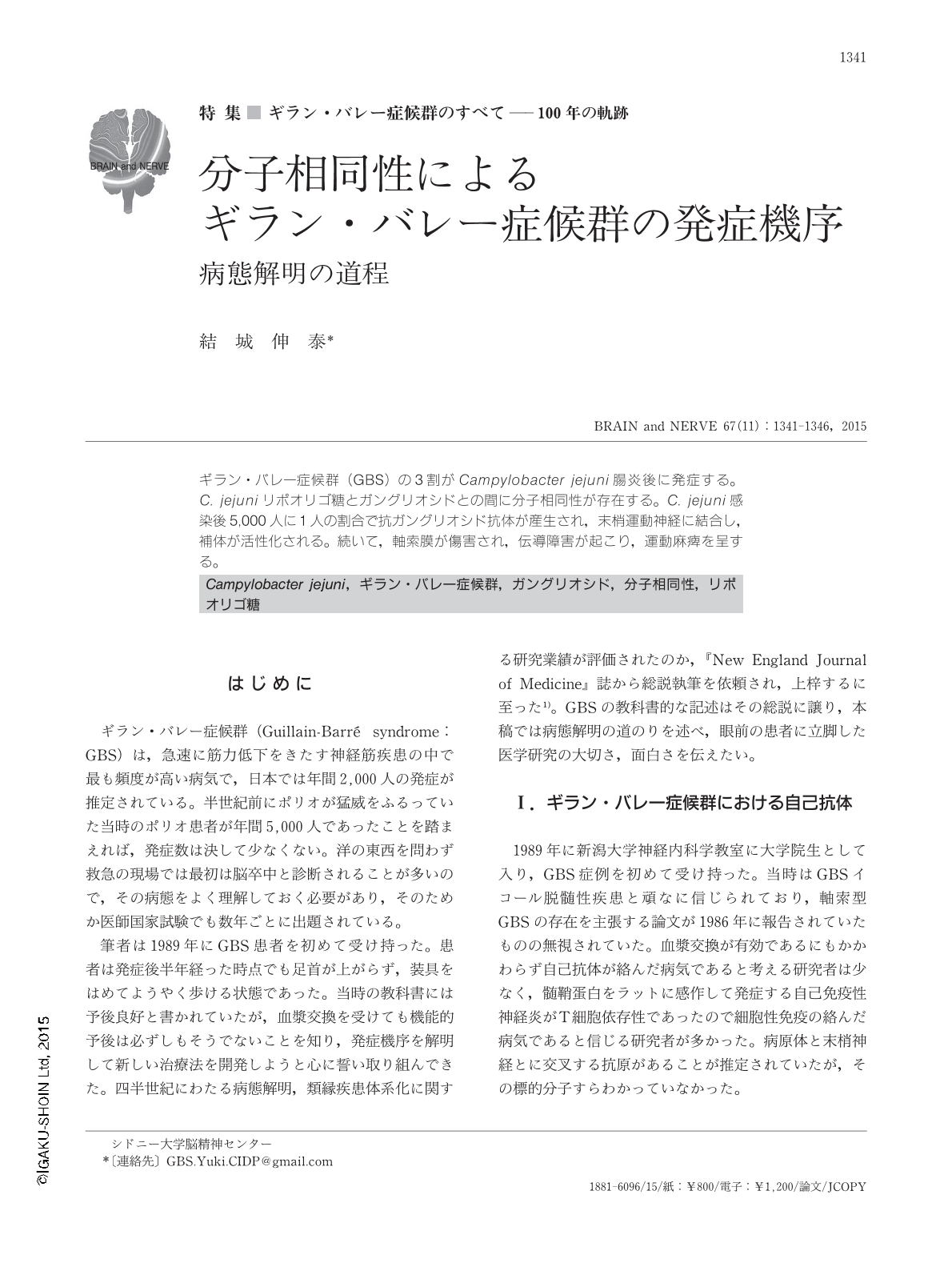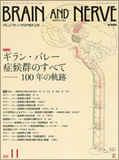Japanese
English
- 有料閲覧
- Abstract 文献概要
- 1ページ目 Look Inside
- 参考文献 Reference
ギラン・バレー症候群(GBS)の3割がCampylobacter jejuni腸炎後に発症する。C. jejuniリポオリゴ糖とガングリオシドとの間に分子相同性が存在する。C. jejuni感染後5,000人に1人の割合で抗ガングリオシド抗体が産生され,末梢運動神経に結合し,補体が活性化される。続いて,軸索膜が傷害され,伝導障害が起こり,運動麻痺を呈する。
Abstract
One-thirds of patients develop Guillain-Barré syndrome subsequent to Campylobacter jejuni enteritis. Molecular mimicry exists between C. jejuni lipo-oligosaccharides and human peripheral nerve gangliosides GM1 and GD1a. IgG antibodies against GM1 or GD1a are produced in one out of 5,000 patients with C. jejuni enteritis. The autoantibodies bind to gangliosides at the nodes of Ranvier in the peripheral motor nerves and activate complement in situ. This is followed by the disappearance of the voltage-gated sodium channel clusters at the nodes and disruption of axo-glial junctions at the paranodes. This results in the development of motor nerve conduction failure and muscle weakness in the four limbs.

Copyright © 2015, Igaku-Shoin Ltd. All rights reserved.


